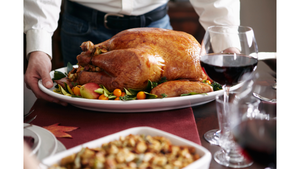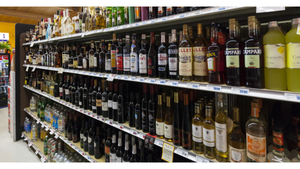PACKAGING, LABELS CALLED RECIPES FOR SAFETY, PROFITS
DALLAS -- Retailers can overcome consumers' doubts about the freshness of prepared foods by leveraging the power of packaging and labels to communicate their commitment to quality, said a pair of industry experts at the biennial convention here of the North American Association of Food Equipment Manufacturers, Chicago.William Ryan, associate vice president of the Culinary Institute of America, Hyde
October 18, 1999
ROBERT VOSBURGH
DALLAS -- Retailers can overcome consumers' doubts about the freshness of prepared foods by leveraging the power of packaging and labels to communicate their commitment to quality, said a pair of industry experts at the biennial convention here of the North American Association of Food Equipment Manufacturers, Chicago.
William Ryan, associate vice president of the Culinary Institute of America, Hyde Park, N.Y., and Richard Vergili, a professor of sanitation at the school, said that the formula for a profitable fresh-foods program is equal parts food safety, merchandising, quality, variety and convenience. All can be conveyed to the shopper via packaging and, especially, labels.
According to Ryan, packaging options continue to be limited, yet the right container can act as a prime indicator of quality, food safety and convenience.
"Packaging is one of the biggest challenges that everybody in this business has today," he said. "Chances are it's a black-bottom, clear-plastic top. Whether it's high quality or a budget item, it all looks the same and it is very difficult for us to develop any sense of difference."
Ryan recalled a recent trip to Japan, where prepared foods are merchandised in much more distinct fashion. In one case, "an octagonal box opens into a gold-coated plate that has the food in it. Those types of things need to be brought into the U.S. to give food aesthetics and a difference that we seem to be lacking."
Packaging can position (and upsell) the concept, provide stricter portion control and build the brand through differentiating design or color, he added.
While the "medium is the message," what goes into the package must be safe. Vergili stressed the need for retailers to start with fresh product every day, operate a straight-line kitchen flow, prepare in small batches, and conduct regular "shelf-life" tests while the product is awaiting purchase.
In the store, "we want to make sure we don't stack food so much that it creates a situation that leads to temperature abuse," he said. Besides just-in-time stocking, quicker turns can also be achieved by positioning fresh-food displays in a location that promotes maximum convenience and impulse exposure, such as near a door or the checkout.
Once the product is in the consumer's hands, what can the retailer do to further communicate a commitment to quality prepared foods? Vergili said that instructional labeling with bright graphics and simple procedures are most effective.
"You certainly can't teach them a ServeSafe course, but we can provide them with labels that have good information," he said, referring to the popular food-safety education course developed by the Washington-based National Restaurant Association, and recently approved for use in supermarkets by the Food Marketing Institute, also in that city.
Basic, "quick-hit" instructions on food-safety basics also can help protect a retailer should a customer become ill from the food purchased, according to Vergili. Labels might include precautions to "refrigerate or freeze leftovers within two hours," "Reheat to 165 degrees Fahrenheit and stir to cook evenly" and "Unless frozen, eat leftovers within 3 to 4 days."
Consumers can be alerted to the instructions with a change to color logos or graphics denoting the nature of the instructions. In one example provided by the speakers, a black-and-white bar-coded label that included food-safety basics, pack and sell-by dates, and price was redesigned with a large logo of a hand holding a platter of food at the top, enrobed in the words, "Serve Safely." A separate color bar highlighted the actual instructions; the bar code, price and dating data were dispersed to opposite ends of the label.
Operators don't have to try to cram every single piece of food-safety information onto each label, Vergili said. Related -- but pertinent -- issues can be presented to consumers at the point of purchase through a standing rack or display of brochures from health agencies or the retailer. Here, shoppers can pick up brochures on personal hygiene, cross contamination, and more explicit descriptions of the time-and-temperature relationship to foodborne illness.
In the end, the entire effort should create stronger partnerships with manufacturers and suppliers, since they can be great resources for retailers to tap as they address customer-focused food-safety issues, Vergili said.
About the Author
You May Also Like




